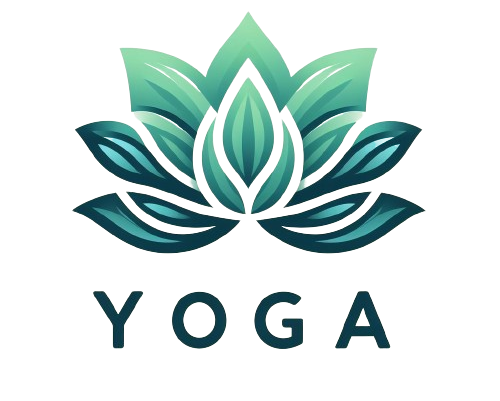 Think about your favorite song for a moment What happens when you hear it? Most likely, you experience a noticeable lift in your mood. The powerful influence that sound has on our emotional and psychological states is undeniable. Music and sound can serve as a gateway to different emotional experiences, memories, and even physical states of being. This phenomenon is particularly impactful in the context of yoga. As a practice that hinges on achieving a harmonious mind-body connection, sound can play a transformative role.
Think about your favorite song for a moment What happens when you hear it? Most likely, you experience a noticeable lift in your mood. The powerful influence that sound has on our emotional and psychological states is undeniable. Music and sound can serve as a gateway to different emotional experiences, memories, and even physical states of being. This phenomenon is particularly impactful in the context of yoga. As a practice that hinges on achieving a harmonious mind-body connection, sound can play a transformative role.
When you practice yoga with the accompaniment of carefully chosen sounds, the experience becomes markedly enriched. The right kind of music or ambient noise can help you to enhance focus, allowing you to immerse yourself fully in the present moment. The rhythmic patterns and soothing tones can guide your mind into a state of heightened concentration. In a world where distractions are abundant, this level of focus can be profoundly beneficial.
The inclusion of sound in your yoga practice can serve as an effective tool for stress mitigation. The calming effects of slow, harmonious sounds have been well-documented; they can activate the parasympathetic nervous system, thereby reducing cortisol levels. As the rhythmic sounds wash over you, any built-up tension and stress begin to dissipate, replaced by a sense of tranquility and relaxation.
Another key benefit of incorporating sound into your yoga practice is the ability to sync your breath with your movements. In yoga, the breath is the bridge that connects the mind and the body, and maintaining a rhythmic breathing pattern is crucial. Gentle, repetitive sounds can serve as an auditory cue, helping you to regulate your breath seamlessly with each movement. This synchronization allows for a more fluid and harmonious practice, enhancing the overall experience.
The Magic of Music in Yoga
You’re in a yoga class, attempting to melt into a Warrior II pose, when your favorite chill track starts playing softly in the background. Instantly, it feels as if the music is guiding you through the movements. That’s because music can help synchronize your mind and body, making it easier to stay in the moment.
Ever noticed how certain beats can make you feel on top of the world? The same applies to yoga. Upbeat tunes during fast-paced sequences can energize you. On the flip side, serene tracks in restorative poses can help you unwind fully. Music can set the tone for each part of your practice.
Sticking to a yoga routine can sometimes feel tough. But when your playlist features compelling rhythms, you’ll find it easier to roll out your mat consistently. The right music can make even the most challenging poses a bit more bearable, or dare I say, fun!
Mantra Meditation
Mantras are specific sounds or phrases repeated during meditation. They’re like magic words that help to divert your mind from distractions. In the context of yoga, they can be incredibly beneficial for diving deeper into meditation.
Mantras provide a focal point. Repeating a phrase like “Om” can help channel your thoughts, making it easier to meditate. When your mind is fixated on a single sound, it’s less likely to wander.
Certain mantras have the power to evoke emotions. By chanting mantras that resonate with you, it becomes easier to tap into your feelings, making it a useful practice for emotional healing.
How to Use Mantras
You don’t need to be an expert to start with mantras.
- Pick something that resonates with you or opt for popular ones like “Om,” “So Hum,” or “Om Mani Padme Hum.”
- Sit comfortably and close your eyes.
- Repeat the mantra silently or out loud, focusing on its sound and vibration.
Sound Healing Yoga
Sound healing uses vibrations to improve your physical and emotional health. Instruments like singing bowls, gongs, and tuning forks create resonant vibrations that facilitate healing.
The soothing sounds produced by these instruments can help you relax deeply. They lower cortisol levels, making you feel more at ease.
Sound waves can reduce physical discomfort. Some studies suggest that certain frequencies can alleviate chronic pain.
Sound healing can make meditation more effective. The vibrations help you attain a meditative state quicker, allowing for a deeper experience.
Combining Music, Mantras, and Sound Healing
Incorporating sound elements into your yoga practice doesn’t have to be a endeavor. There are a few simple yet effective ways to seamlessly integrate sound that can enhance the overall experience. One effective method is to start your practice with music that energizes and uplifts. These tracks can invigorate your body and prepare your mind for the session ahead. As you transition into more focused and meditative poses, the use of mantras can bring a deep sense of concentration and spirituality to your practice. Chanting a chosen mantra helps to center your mind and can imbue your movements with a rhythmic, almost sacred quality. Finally, concluding your session with sound healing vibrations can promote deep relaxation and a sense of well-being. The resonance of these sounds can fill the room, enveloping you in a cocoon of tranquility that helps you to absorb the benefits of your practice fully.
To create a holistic experience, it’s important to be intentional about the sounds you choose. Each selection should ideally enhance specific parts of your practice, whether it be energizing tracks for warm-up, mantras for focus, or sound healing for relaxation. Being intentional helps to create a flow that feels natural and supportive rather than chaotic or disjointed. It’s also crucial to pay attention to the volume of the sounds you are incorporating. Sounds that are too loud can become a distraction, making it difficult for you to focus inward. On the other hand, sounds that are too soft may not be effective in guiding your mind and breathing. Finding the right balance is key to maintaining a conducive atmosphere for practice.
Experimentation can also greatly enhance your practice. Don’t be afraid to mix and match different sounds to see what works best for you. You might discover that certain combinations of tracks, mantras, and sound healing techniques create a unique auditory landscape that resonates particularly well with you.
